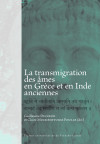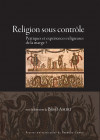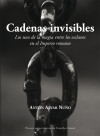
- Summary
-
Beyond the traditional image, today discussed, of religious flows from the East, the book aims to broaden our perception of religious interferences and to study some of the axes and actors of these mobility processes with the will to show the reciprocity of religious exchanges and the mobility dynamics of cults within the borders of the Roman Empire. Through the many variations of the polytheistic system in its host territories, it will be a question of gods on the road, men on the move and stories under construction, all inviting us to rethink the openness of religious systems under the angle of interaction and dialogue.
- Contents
-
Introduction: Migration et mobilités religieuse. Pour une mise en perspective
Bassir Amiri
Partie I – Construire et déconstruire la mobilité religieuse
L’Orient créé par Franz Cumont, ou l’ambiguïté de sa présentation des religions orientales
Danny Praet
Une fête juive à Rome : les « Jours d’Hérode »
Édith Parmentier en collaboration avec Maureen Attali
Les chemins de Dionysos : la construction culturelle du transfert cultuel, entre textes, images et réalité rituelle
Anne-Françoise Jaccottet
Retour à Sinope, ou l’appropriation d’une tradition inventée
Laurent Bricault
Partie II – Acteurs, pratiques et vecteurs : modalités de transferts cultuels
De Rome à Antium et retour. Colonisation et transferts cultuels dans l’Italie d’époque républicaine
Audrey Bertrand
Les haruspices publics au service de Rome : des aristocrates convoqués d’Étrurie ? Quels aristocrates ?
Yann Berthelet
De la Grèce insulaire au nord de l’Adriatique : l’inscription votive de Theudas
Federica Fontana
Personnel des douanes et mobilité religieuse dans les provinces danubiennes
Françoise Van Haeperen
« Sur les épaules » des empereurs : deux dieux Sol introduits à Rome par Élagabal et Aurélien
Nicole Belayche
Partie III – L’implantation des cultes et des divinités : confrontations, croisements et cohabitations ?
Les theoi patrioi des Phéniciens en pays grec
Maria Bianco
Un dieu romain adopté par des Grecs : les cultes de Zeus Kapetolios dans les cités d’Asie
Gabrielle Frija
Le « lucus » de Pisaurum : un lieu de culte sous influences ? Cohabitations et interférences cultuelles dans l’ager Gallicus à l’époque républicaine
Jean-Claude Lacam
Éleusis-Rome aller/retour. Mobilités religieuses autour des mystères éleusiniens à l’époque impériale
Francesco Massa
Conclusions
Bruno Poulle
- Author (s)
-
Bassir AMIRI (edit. director)Bassir Amiri is Senior Lecturer in Roman History at the University of Bourgogne-Franche-Comté. His work focuses on social history and Roman religion.
- Readership
-
The book is mainly aimed at the scientific community (researchers and teacher-researchers in ancient history, epigraphy, ancient religions), students and an audience interested in religious questions relating to antiquity.
- downloadable items
- Reviews and press reviews
- Support (s)
-
Publié avec le concours de l’Institut des Sciences et Techniques de l’Antiquité (UFC – EA 4011) et de la Région de Franche-Comté












